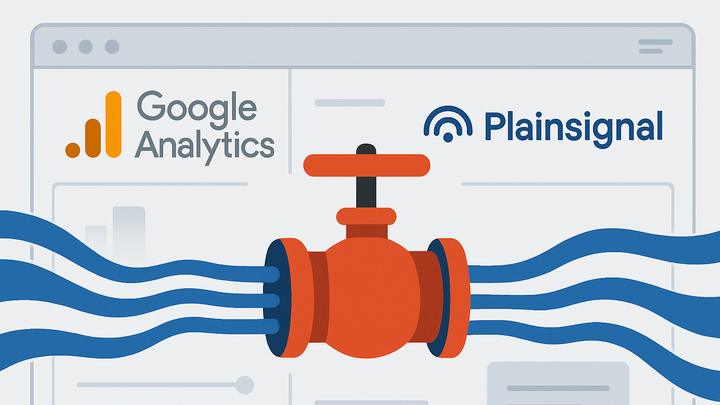Published on 2025-06-28T03:57:51Z
What is Data Throttling? Examples for Data Throttling in Analytics
Data throttling in analytics refers to the controlled regulation of event or request volume sent to analytics servers to prevent performance degradation, system overload, or excessive costs. By imposing limits or pacing on data flow, platforms ensure consistent throughput and stability even during traffic spikes. Throttling can be static (fixed quotas per time window) or dynamic (adaptive to current system load), and it differs from sampling by potentially delaying or dropping events rather than reducing their resolution. While throttling may affect real-time completeness, modern tools like GA4 and PlainSignal provide monitoring and configuration options to balance performance with data integrity. This article explores the concept, mechanisms, platform implementations, and best practices for effective data throttling.
Data throttling
Controlled regulation of analytics event flow to maintain performance, avoid overload, and manage costs.
Understanding Data Throttling
An overview of data throttling in analytics, its purpose, and how it differs from sampling or simple rate limiting.
-
Definition
Data throttling refers to limiting the rate at which analytics events or API calls are sent to a platform, ensuring stable performance and avoiding overload.
-
Key objectives
The main goals of data throttling are to protect system resources, control costs, and maintain accurate reporting by smoothing out traffic spikes.
Why Data Throttling Matters
Explores the impact of data throttling on system performance, cost management, and data quality in analytics environments.
-
Performance optimization
Throttling prevents sudden surges of events from overwhelming servers, reducing latency and ensuring consistent data processing.
-
Cost control
By capping event volume, organizations avoid unexpected overage fees on usage-based platforms such as GA4.
-
Data integrity
Smoothed data flow prevents bursts that can skew real-time dashboards or bias metrics when events are dropped.
How Data Throttling Works
Breaks down the mechanisms and configurations behind implementing data throttling in analytics platforms.
-
Thresholds and quotas
Defines fixed or sliding-window limits on events or API calls per time unit (e.g., 1 million events per hour).
-
Fixed quotas
Predefined caps reset after each period, useful for predictable workloads.
-
Sliding windows
Rolling counts over a set timeframe, offering flexibility during variable traffic.
-
-
Dynamic throttling
Adjusts limits in real time based on system load, reducing throughput during peak usage to maintain stability.
-
Monitoring and alerts
Analytics teams can configure alerts when throttle thresholds are approached or exceeded, using tools like the GA4 console and PlainSignal dashboards.
Examples in GA4 and PlainSignal
Demonstrates how Google Analytics 4 and PlainSignal implement data throttling, including configuration defaults and code snippets.
-
GA4 data limits
GA4 enforces daily and monthly event quotas. When thresholds are met, additional hits may be sampled or dropped, impacting data completeness.
-
Free tier quotas
Up to 10 million events per property per month; excess events are throttled or sampled.
-
Bigquery export limitations
Exports are throttled if daily streaming inserts exceed project quotas.
-
-
PlainSignal cookie-free throttling
PlainSignal uses lightweight scripts and configurable rate limits to manage event traffic without cookies. Implement it as follows:
<link rel="preconnect" href="//eu.plainsignal.com/" crossorigin /> <script defer data-do="yourwebsitedomain.com" data-id="0GQV1xmtzQQ" data-api="//eu.plainsignal.com" src="//cdn.plainsignal.com/plainsignal-min.js"></script>
Best Practices to Manage Data Throttling
Actionable strategies for analytics professionals to configure, monitor, and optimize data throttling.
-
Regular monitoring
Track event volumes and throttle usage in dashboards to anticipate spikes before they trigger limits.
-
Proactive alerts
Set up email or Slack notifications for threshold breaches using GA4 or PlainSignal’s webhook integrations.
-
Optimize event payloads
Reduce event size and frequency by consolidating similar user actions into batch events where possible.
